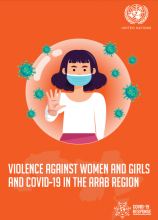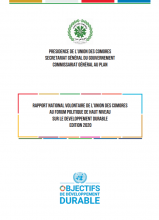Gender
Women in the Arab region make up almost half of the total population.[1] However, and despite the improvements, a deep gender gap continues to hold back the region. Aside from the life expectancy and education attainment, men outpace women in nearly all human development sectors, including labor market participation, political participation, economic empowerment, and access to justice.[2]
The region has experienced remarkable improvements in the health sector which have also benefited girls and women. Maternal mortality rate has declined from 250 per 100,000 live births in 2000 to 149 per 100,000 live births in 2017,[3] and the percentage of births attended by skilled health personnel has increased from 51.9 percent in the 1990 to 87 percent in 2016.[4] Female life expectancy at birth has also increased in all Arab countries, rising from an average of 69.7 in 2000 to an average of 73.6 years in 2018.[3]
The Arab region has made substantial progress toward improving girls’ access to education. The Gender Parity Index reached 0.94 at the primary education level, 0.93 at the secondary education stage and 1.1 for tertiary education in 2018. The highest tertiary enrolment rates for girls were observed in Saudi Arabia at 69.9 percent in 2018, followed by Bahrain at 67.8 percent. On the other side, the lowest tertiary enrolment rate for girls was registered in Mauritania at 3.3 percent in 2017.[5][6]
Despite the increase in the number of girls and women attaining education over the past decade, gender-based disparities continue to persist in the labor market, both in terms of income and opportunities to find a job or start a company. The region has the lowest women labour force participation rate at 20.8 percent in 2019. Compared to men, women also face a higher risk of unemployment and more barriers to enter the labor market. Women’s unemployment rate in the region is the highest at 20 percent, compared to men’s unemployment rate of 7.8 percent and to the world’s average of 5.6 percent in 2019. This rate is especially high among youth, with female youth unemployment rate registering 38.5 percent, the highest in the world.[7]
The political space remains the most challenging for women. Women’s political participation has increased in the last two decades but is still limited. The proportion of seats held by women in national parliaments has considerably increased over the last two decades years, increasing from 3.7 percent in 2000 to 18 percent in 2019, but it is still lower than the world average of 24.5 percent. Similarly, while the global proportion of women in ministerial level positions scored 18.4 percent in 2016, the Arab regions’ proportion reached 10.7 percent in 2016 up from 7 percent in 2005.[4]
Many countries in the Arab region have been working to bridge the gender divide through policy interventions, women's economic empowerment, increasing political visibility through nongovernmental organizations and reforming the legal framework. However, many laws and regulations still do not enforce equality and non-discrimination on the basis of sex.
This overview has been drafted by the ADP team based on most available data as of June 2020.
Sources:
[1] Population Division of the Department of Economic and Social Affairs of the United Nations Secretariat. 2019. World Population Prospects. [ONLINE] Available at: https://population.un.org/wpp/ [Accessed 1 June 2020].
[2] UNDP Programme of Assistance for the Palestinian People. March1, 2018. “Ahu Rajil, wa As-Salam” Where are the Men in Advocating for Gender Equality in the Arab Region?. [ONLINE] Available at: http://www.ps.undp.org/content/papp/en/home/presscenter/articles/2018/03/gender-equality-in-arab-region.html [Accessed 1 June 2020].
[3] The World Bank. 2019. World Development Indicators. [ONLINE] Available at: https://databank.worldbank.org/data/reports.aspx?source=world-development-indicators [Accessed 1 June 2020].
[4] The World Bank. 2019. Sustainable Development Goals database. [ONLINE] Available at: https://databank.worldbank.org/source/sustainable-development-goals-(sdgs)/Type/TABLE/preview/on [Accessed 1 June 2020].
[5] United Nations Organization for Education, Science and Culture (UNESCO). 2019. UIS Institute for Statistics. [ONLINE] Available at: http://data.uis.unesco.org/# [Accessed 1 June 2020].
[6] The UNESCO Arab States’ averages do not include Comoros and Somalia.
[7] ADP calculations based on data extracted from the International Labour Organization (ILO). 2018. ILOSTAT. [ONLINE] Available at: https://www.ilo.org/ilostat [Accessed 1 June 2020].
Data Highlights
-
The political space remains the most challenging for women in the Arab region. Women’s political participation has improved in the last sixteen years but is still limited. The proportion of seats held by women in national parliaments considerably increased from 3.8% in 2000 to 18.7% in 2015, but is still lower than the world average of 22.5% in 2015.




